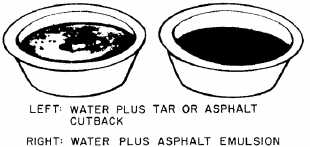Figure 8-26.-Water-mixing test for emulsions.
rapid setting emulsion termed a nonmixing
grade
or
a
medium-
or
slow-setting
emulsion termed as mixing grade emulsion.
To
know
which
type
is
present
is
important
because
the
applications
of
the
mixing
and
nonmixing
types
vary
greatly.
The
test
performed
to
distinguish
between
these
two
types
of
emulsions
is
the
stone-coating
test.
This test consists of taking a handful
of damp sand and adding to the sand a
small amount of emulsion (estimate about
6 to 8 percent by weight) and attempting
to mix the two materials. Care should be
exercised not to add so much emulsion
that the sand becomes saturated.
A
rapid-setting
emulsion
will
“break” so quickly it will not be possible
to
mix
it
with
sand.
It
breaks
immediately, gumming up the mixing spoon
and the aggregate with asphalt cement;
otherwise, if the unknown sample is a
medium-
or
slow-setting
emulsion
when
added to the damp sand, it will mix easily
and coat all the particles completely as
well as the mixing spoon with a uniform
coating
of
asphalt.
Identification
of
an
emulsion merely as a mixing or nonmixing
type
is
sufficient
for
field
conditions.
The difference in viscosity is unimportant
because
there
are
so
few
grades.
No
distinction is necessary between medium-
and slow-setting emulsions since both are
mixing types used largely for the same
purpose.
Another test for emulsions is the
WATER-MIXING TEST (fig. 8-26). Because
emulsions are made with water, more water
may
be
added
to
emulsions
without
disturbing the uniformity of the liquid.
None of the other bituminous materials
will dissolve in water.
A FLAME TEST can also be used in
testing
asphalt
emulsions.
A
cloth
saturated
with
asphalt
emulsion
will
smolder but will not burn or burst into
flame.
Other
bituminous
materials
are
combustible.
Laboratory Test of Bituminous Materials
In
addition
to
the
field
tests,
various tests are performed on bituminous
materials in the laboratory. These tests
usually
are
made
for
the
purpose
of
checking
compliance
with
the
established
specifications;
however,
laboratory
tests
may also be made to identify the material
beyond
field
identification,
to
furnish
information
for
mix
design,
or
to
establish
safe
handling
procedures.
Bituminous materials are produced to
meet the specification established by the
federal
government,
the
American
Association
of
State
Highway
Officials
(AASHO), and the American Society for
Testing
Materials
(ASTM).
These
specifications
define
the
extreme
limits
permitted
in
the
manufacture
of
the
material and assure the user that the
material
will
possess
definite
characteristics
and
fulfill
the
project
requirements. Consult with the EAs for the
proper
specifications
required.
ESTIMATION OF MATERIALS
Many
different
combinations
of
materials are used on bituminous surfaces.
Before a bituminous surface is placed, the
surface to be covered normally requires
the placing of a preliminary treatment: a
prime or a tack coat.
Prime Coat
Prime coats are placed on a dirt or
gravel surface. The purpose of priming is
to waterproof and dustproof the surface,
plug capillary voids, and coat and bond
loose particles. A prime coat also hardens
or toughens the surface, promotes adhesion
between the existing surface and the new
surface, and penetrates the surface.
The priming material may be one of the
following:
A low-viscosity tar, such as RT-2,
RT-3, or RT-4
A
low-viscosity
asphalt,
such as MC-30, -70, -250, or
SC-70, -250,-800
A diluted asphalt emulsion
Bituminous materials used for the
prime coat should be applied in quantities
known as the rate of application (ROA) of
not less than 0.2 gallon or more than 0.5
gallon
per
square
yard.
Normally,
the
construction
project
specifications
denote
the ROA for the prime coat application;
however, when the ROA is not included in
the project specifications, the NCF uses
an ROA of .3 for planning purposes.
8-27


